The AI Revolution in Academia
Are You Ready to Redefine Research?
Listen to the AI-generated podcast version of this article:
The AI Tsunami in Academic Research
Imagine a world where AI not only matches but surpasses the average graduate student or professor in IQ tests. Stop imagining—because that world may already be upon us. Will we lead the AI revolution in research, or will we be left behind?
The Rapid Advancements of AI in Research
OpenAI's o1-preview model has achieved an IQ score of 120, surpassing the average academic's IQ. And this is just the beginning. As AI is projected to reach higher IQ levels soon, we’re experiencing a fundamental transformation in how knowledge is created, validated, and shared.
This AI tsunami isn't going to replace researchers. It's changing what it means to be a scholar in the 21st century. Are we prepared to take on this challenge?
The AI Toolkit: Transforming Academic Workflows
Gone are the days when a simple keyword search in Google Scholar and a few months of manual coding sufficed for groundbreaking research. Today's AI-powered tools are not just aids; they're co-pilots in the journey of discovery.
Here’s what I’ve observed in using AI for research:
Many of us use AI to
Evaluate and prompt research ideas (e.g., ChatGPT, Claude, Perplexity).
Conduct literature review (e.g., Perplexity, Scite).
Refine writing.
Assist in both qualitative and quantitative data collection and analysis.
For qualitative researchers
Develop and refine interview protocols.
Write and refine detailed memos.
Identify patterns and perspectives that manual reviews might miss.
For quantitative researchers
Develop and validate the hypotheses.
Design and run experiments/surveys (e.g., Expected Parrot).
Scrape websites into structured data (e.g., mendableai/firecrawl, unclecode/crawl4ai).
Feeling adventurous?
AI can even produce full-blown research papers through packages like SakanaAI/AI-Scientist and Technion-Kishony-lab/data-to-paper.
This expanding AI toolkit is not only making research more effective and efficient, it's also opening up new possibilities for research.
The Case of AI in Literature Reviews
Based on my recent discussion with new MRes students at the Imperial College Business School (view the slide deck), this section goes deeper into how AI is transforming literature reviews.
Consider these critical questions:
Is AI merely making existing processes more efficient, or is it fundamentally transforming the nature of scientific inquiry?
How can we leverage AI’s capabilities to enhance our thinking without becoming entirely dependent on it for reasoning?
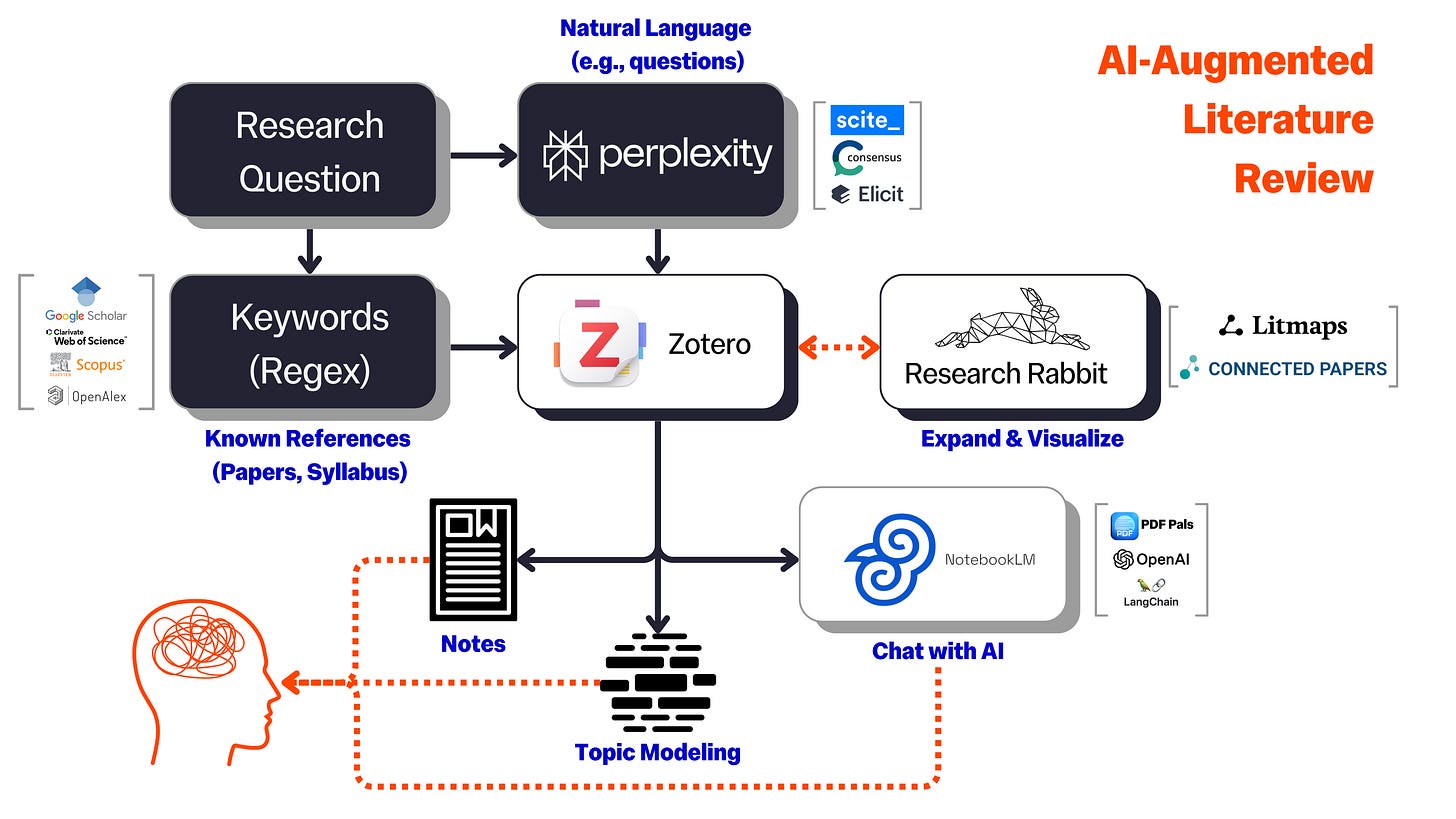
Human vs. AI-Driven Processes in Academic Review
Human-Driven (Traditional) Literature Review:
Time-Consuming: Requires extensive manual searching and reading.
Manual Searches: Utilizes databases like Google Scholar, Web of Science, and Scopus.
Controlled Direction: Offers greater control over research focus and keyword selection.
Learning Opportunity: Engages researchers deeply, fostering a personal understanding and “taste” for their field.
AI-Driven Literature Review:
Fast and Efficient: Accelerates the search and analysis process.
Natural Language Querying: Allows intuitive searching without complex keywords.
Automated Summaries: Generates concise summaries and extracts key information.
Limited Control: Less precise relevance judgments can sometimes miss critical nuances.
Potential Biases: Dependent on the data sources and underlying models, which may introduce biases.
AI-Augmented Approach: The Best of Two Worlds
Combining traditional and AI-driven methods offers a powerful synergy:
Efficiency with Control: AI tools accelerate the process while maintaining researcher oversight to guide the direction and focus.
Enhanced Exploration: Tools like Research Rabbit, Connected Papers, and Litmaps visualize and expand literature searches beyond traditional boundaries.
Customized Workflows: Tailor your research process by leveraging AI for initial searches and summaries, then applying human judgment for in-depth analysis.
Balanced Learning and Efficiency: AI handles data processing, allowing researchers to engage deeply with the material, fostering learning and developing research instincts.
Mitigating Current AI Limitations: Human oversight mitigates issues like AI hallucinations or biases, ensuring research quality and relevance.
Unique Perspectives: Maintains individual “taste”, preventing generic or AI-dominated outputs.
Leveraging Strengths of Both: AI excels at data processing and pattern recognition, while humans provide contextual understanding and creative synthesis.
Adaptability: Adjust methods based on project needs, utilizing more or less AI assistance as appropriate.
Skill Development: Enhances both traditional research skills and AI proficiency, preparing researchers for the evolving academic landscape.
Quality Control: Ensures sources and information meet academic standards, addressing concerns about AI-generated content quality.
Note: The goal is to figure out how to maximize efficiency without sacrificing the depth and quality that human insight brings to academic inquiry.
Beyond Keyword Searches
Initial Search Strategies
Perplexity: Offers an intuitive, natural language approach to academic searches and stands out for several reasons:
Latest AI Models: Integrates cutting-edge AI models with the flexibility to switch between them.
Comprehensive Search Scope: Searches the entire web, not limited to academic databases.
Academic Mode: Prioritizes reputable sources like Semantic Scholar, arXiv, and SSRN.
Automated Summaries: Generates concise summaries and provides direct answers to research questions based on existing literature.
Other Notable Tools:
Elicit: Specializes in automating literature reviews and extracting specific information from papers. It excels at summarizing key details like methodologies, sample sizes, and results across multiple studies.
Scite: Provides "smart citations" that show how papers are cited by others, indicating whether they support, contradict, or merely mention the original work. This helps researchers quickly assess the impact and reception of studies.
Consensus: Offers a "Consensus Meter" to visualize scientific agreement on topics. It uses AI to analyze and summarize findings across multiple papers, helping researchers quickly grasp the current state of knowledge in a field.
Recommendation: Start with Perplexity for a versatile and comprehensive search experience. Its balance of AI capabilities and academic focus makes it a good starting point for most research.
Zotero as the Central Hub in Your AI-Augmented Research Workflow
Why Choose Zotero?
Browser Integration: Zotero has plugins for all major browsers, including mobile browsers. This allows for easy capture of references while browsing.
PDF Retrieval: When set up with your institution's library proxy, Zotero can automatically pull PDFs for articles you save.
Open-source Community: Zotero has a vibrant community developing add-ons, expanding Zotero’s functionality to meet diverse research needs. Start with Add-On Market for Zotero.
Integration with Other Tools: Zotero can sync with tools like Research Rabbit (to expand and visualize your literature search) and Obsidian (to link reading notes and easily cite while you write)
File Management: Add-ons for Zotero (e.g., Zotero Attanger) can help with renaming and organizing attachments. For example, they can automatically name PDFs using a format like "LastName_Year_Title".
Data Export: Zotero allows easy export of our library in various formats (e.g., CSV, RIS, BibTeX), which can be used with other tools for analysis or visualization.
While not officially supported, some users mention a Sci-Hub plugin for Zotero that can automatically retrieve PDFs, though this raises legal and ethical concerns.
Expand and Visualize: Mapping the Literature Landscape
Once our initial references are organized in Zotero, it’s time to expand and visualize your research landscape with advanced tools like Research Rabbit, Litmaps, and Connected Papers. These tools can assist in identifying connections and trends in our research that may otherwise be overlooked.
Synchronization: Research Rabbit syncs with your Zotero library, allowing you to easily import your initial collection.
Relationship Mapping: Create visual networks that illustrate how papers are interconnected through citations and similar content, providing a clear overview of the research ecosystem.
Temporal View: Track how the literature has evolved over time, helping identify seminal works and emerging trends.
Expansion Features:
Prior Works: See influential papers cited by your collection or selected papers.
Similar Works: Find papers with similar content or methodology.
Derivative Works: Discover papers that cite your initial set.
Filtering and Sorting: Manage information overload by filtering papers based on keywords (e.g., title, journal, abstract), publication date, citation count, or relevance.
Abstract and Reference Viewing: Quickly access abstracts and reference lists directly within the tool, accelerating the review process.
Easy Addition: Papers of interest can usually be added to a collection (with a single click), which can then sync back to Zotero.
Serendipitous Discovery: Discover relevant papers that might not appear in keyword searches, potentially leading to new research directions.
The next step is to use AI tools to turn many papers into useful ideas.
Knowledge Synthesis: When AI Becomes Your Data Whisperer
Knowledge synthesis uses AI to distill complex information into coherent, actionable themes. Here are some strategies to utilize AI for efficient knowledge synthesis:
Topic Modeling
Export References from Zotero:
Select Papers/Collections: In Zotero, choose the specific papers or entire collections we wish to analyze.
Export as CSV: Export the selected items as a CSV file, ensuring it includes essential metadata such as titles, abstracts, and other bibliographic details.
Utilize AI Tools for Topic Modeling:
Choose Your Tool: Use ChatGPT, Perplexity, or similar AI platforms.
Upload the CSV File: Import your exported CSV into the AI tool to begin the analysis
Perform LDA Topic Modeling:
Request LDA Analysis: Instruct the AI to conduct Latent Dirichlet Allocation (LDA) topic modeling on the uploaded dataset (e.g., titles and abstracts).
Specify Parameters: Define the number of topics you wish to extract and the number of keywords per topic to tailor the analysis to research needs. 10 topics and 5 keywords per topic could be a good starting point.
Execute and Generate: Let the AI generate and execute the necessary code for comprehensive topic modeling.
Interpret and Explore Topics:
Analyze Keywords: Review the keywords associated with each topic to understand underlying themes.
Further Exploration:
Associated Papers: Identify which papers linked to each topic.
Labeling: Assign meaningful labels to each topic, based on papers’ abstracts.
Descriptions: Develop comprehensive descriptions for each topic.
Visualization: Create visual representations of the topics to aid in understanding and presentation.
Pro Tip: For larger datasets or more nuanced analyses, consider using BERTopic instead of LDA. BERTopic leverages the contextual meaning of words, offering deeper insights, though it requires more computational power (often a GPU).
Example workflow:
Chat with Papers
Imagine talking to your entire bibliography like they were individual collaborators. AI-powered chat tools like PDF Pals and custom GPTs are revolutionizing how researchers interact with literature and craft their papers. These tools use Retrieval-Augmented Generation (RAG) to make it easy to interact with multiple PDFs and text documents.
Deploying Custom Chatbots: Your Personal Research Assistant
open-webui/open-webui: A customizable interface for creating research-specific chatbots. Allows researchers to:
Interact with multiple academic papers simultaneously
Integrate various AI models for different research tasks
Access web search for supplementary information
Cinnamon/kotaemon: An open-source tool designed for conversational interactions with academic literature. Features include:
Multi-document question-answering
Support for complex reasoning across multiple papers
Advanced citation capabilities for accurate referencing
Team Collaboration: Deploying chatbots for your research team is straightforward. We can set up a chatbot on your Discord server in just 10 minutes with tools like the one I built with Cursor (e.g., linxule/openai-assistants-discord-bot). Chatbots like this can facilitate group discussions and live reading sessions.
The Power of Chain of Thoughts (CoT) Prompts
What if we have hundreds of papers and need accurate answers, summaries, and contradiction detection? Using Chain of Thoughts (CoT) prompts can help our chatbots do better and more detailed analysis.
Example Prompt:
Analyze the current literature on artificial intelligence in management, organization design, and strategy to assess how well it addresses and explains the concept of increasing AI agency, particularly in the context of agentic systems. Consider the following aspects in your analysis:
1. Evaluate the extent to which current research acknowledges and explores the concept of AI agency in organizational contexts.\n\n\
2. Identify any existing frameworks or theories that attempt to explain the implications of increasingly agentic AI systems in management.\n\n\
3. Assess whether the literature adequately distinguishes between different levels or types of AI agency and their respective impacts on organizational dynamics.\n\n\
4. Examine how well current research addresses the potential shifts in decision-making processes and authority structures as AI systems become more agentic.\n\n\
5. Analyze the coverage of ethical and governance implications related to agentic AI systems in organizational settings.\n\n\
6. Evaluate the literature\'s treatment of human-AI collaboration in the context of increasingly autonomous AI agents.\n\n\
7. Identify any significant gaps or underexplored areas in the current research regarding agentic AI systems in management.\n\n\
8. Assess whether existing empirical studies adequately capture the real-world implications of agentic AI systems in organizations.\n\n\
9. Examine how well the literature anticipates future developments in AI agency and their potential impact on organizational strategy and design.\n\n\
In your response, critically evaluate the strengths and limitations of the current literature in addressing this emerging aspect of AI.
Highlight any areas where the research seems to lag behind technological developments. Identify key questions or areas that require further investigation to better understand the implications of increasingly agentic AI systems in management contexts.Advanced Tools:
Future-House/paper-qa: Specialized in high-accuracy retrieval and question-answering for scientific documents. Key features:
Automatic extraction of metadata from academic papers (e.g., Semantic Scholar API)
Full-text keyword search across multiple documents
Citation generation for answers
microsoft/graphrag: Microsoft's advanced RAG system for deeper literature analysis. Enables researchers to:
Extract and visualize knowledge graphs from academic papers
Generate hierarchical summaries of research fields
Perform global searches across entire research domains
Conduct local, in-depth searches within specific papers or topics
Connect insights from multiple papers for comprehensive understanding
The next breakthrough is to transform these synthesized insights into dynamic content.
Papers to Podcast
Imagine transforming days of intensive reading into minutes of actionable insights delivered through engaging podcasts. Tools like Google's NotebookLM (handling up to 50 documents) and Illuminate (focused on arXiv papers) can create interesting podcasts from academic papers automatically.
Example 2-minute Snippet from NotebookLM:
[2024-09-23 edit] knowsuchagency/pdf-to-podcast is an open-source alternative that can make a podcast, lecture, discussions and more Try it here: https://huggingface.co/spaces/lamm-mit/PDF2Audio.
Richard Feynman Style Lecture from Pdf2audio:
As many have pointed out, this capability could be paradigm-shifting. It redefines how researchers consume, interpret, and disseminate knowledge
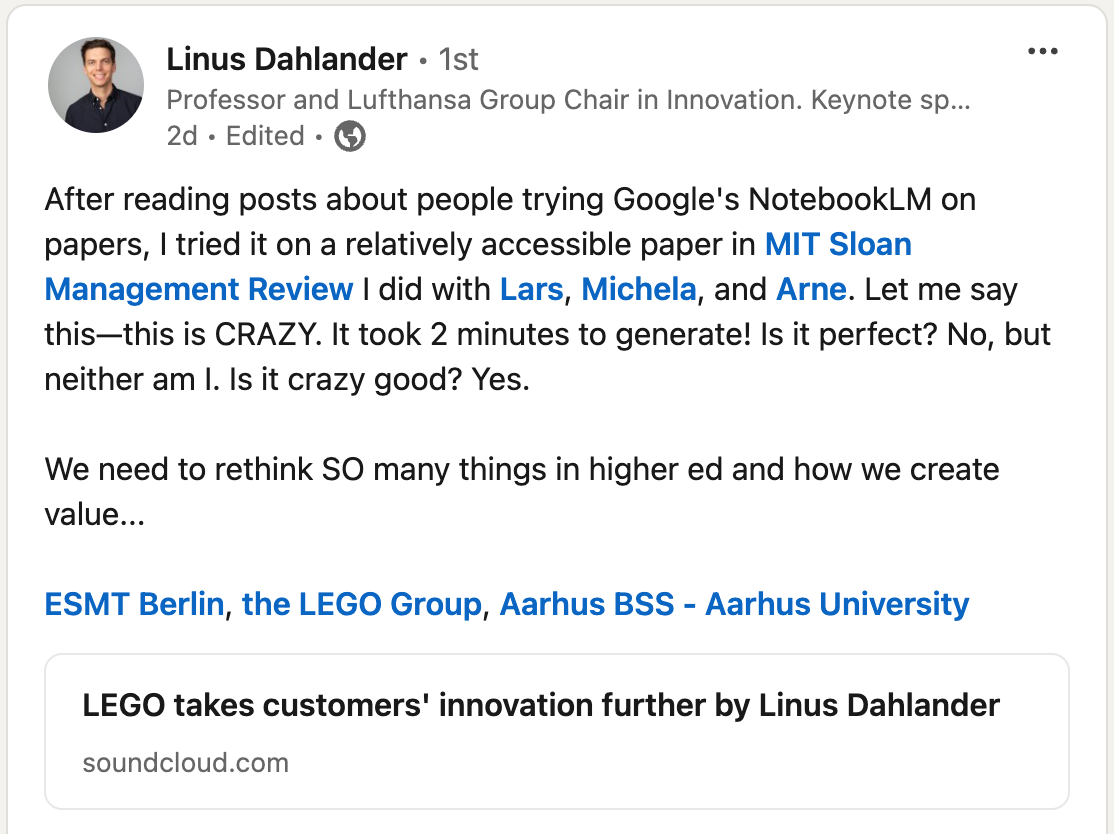
As AI reshapes how we consume and interact with literature, it also disrupts the writing process itself.
AI-Assisted Writing: Collaborative Creativity or Ethical Minefield?
Collaborative Creativity: The writing process itself is undergoing a rapid transformation. I developed a personalized AI writing assistant, the "Red Pen Scholar," inspired by the University of Chicago's Little Red Schoolhouse writing program. This tool embodies the potential of AI to enhance creativity, offering suggestions, refining arguments, and ensuring clarity without overshadowing the writer's unique voice.
The Rise of AI Writing Services: Companies like wisio.app and Jenni AI have advanced AI writing services to the point where AI can write entire sections based on the context and knowledge provided. While these tools make the creation of academic content faster and potentially more polished, they also pose significant ethical dilemmas.
The Ethical Quandary: As AI writing tools become more sophisticated, we must confront a critical question:
At what point does AI assistance cross the line into academic dishonesty?
Challenges in Enforcement: Detecting and preventing the misuse of AI in academic writing is increasingly difficult. Universities and publishers must evolve their policies and detection methods to address this emerging issue promptly.
A Call to the Scientific Community: I urge those dedicated to advancing science to prioritize authentic writing practices:
Learn and Write: Engaging in the writing process fosters more in-depth understanding and critical thinking.
Collaborate Ethically: Use AI as a tool to enhance your work, not to replace the intellectual effort required for genuine scholarship.
The PhD Student Dilemma
Consider the unsettling reality many PhD students face today: If professors can produce superior writing and analyses with AI, what incentives remain for them to invest in training the next generation of researchers?
This dynamic threatens to disrupt traditional academic apprenticeship, potentially diminishing the quality and depth of training that doctoral candidates receive.
The integration of AI in writing is not inherently detrimental. When used responsibly, AI can serve as a powerful ally, enhancing productivity and creativity.
Since AI is increasingly being used in academic research, it is important to understand how it affects research workflows beyond literature review.
The Future is Here: AI Researchers
AI’s capabilities extend far beyond accelerating literature reviews. Today, AI can automate nearly every facet of the research process, transforming how scholars conduct studies from inception to publication. Examples include:
SakanaAI/AI-Scientist
Automate the entire scientific research lifecycle in machine learning. Key features include:
Generates novel research ideas and designs experiments
Writes and executes code for experiments
Analyzes results and creates visualizations
Produces full scientific manuscripts, including LaTeX formatting
Performs automated peer review of its papers
Operates in an open-ended loop, building on previous discoveries
Estimated cost of $15 per generated paper
The AI Scientist has demonstrated the ability to produce papers that exceed acceptance thresholds for top machine learning conferences, as judged by its own automated reviewer. Browse through these AI-generated papers for yourself.
Technion-Kishony-lab/data-to-paper
It guides AI agents through a complete end-to-end scientific research process, starting from raw data and concluding with comprehensive papers. Key aspects include:
Creates research hypotheses and conducts literature searches
Writes and debugs data analysis code
Interprets results and writes step-by-step research papers
Produces transparent, traceable manuscripts with programmatically linked results, methods, and data
Allows for human oversight and intervention at each research step
Can be used for open-goal or fixed-goal research across different fields
Both systems represent significant advances in AI-driven scientific research, aiming to accelerate discovery while keeping key scientific values like transparency, traceability, and verifiability. But they also raise important questions about the role of human researchers in AI-led scientific inquiry.
The Human Element: Thriving in the AI-Augmented Research Landscape
AI tools are catalysts for human creativity, pushing us to ask better questions and explore uncharted territories. Studies that were once impossible to do on a large scale are now possible. Future academics will need to know AI as well as they know their subjects.
This is more than just a change in skills. It's redefining what it means to be a researcher. Are researchers becoming skilled collaborators and interpreters, asking the right questions and critically evaluating AI-generated insights? As we integrate AI deeper into academic workflows, what will remain uniquely human? It's more important than ever to know how human researchers could use AI-generated insights and question human and machine assumptions to develop original theories and build value-aligned insights.
The Future is Now. AI advances in the past two years are already changing entire fields and pointing to a future of human-AI collaboration in research.
My thesis research on Decentralized Autonomous Organizations (DAOs) is such a case. By leveraging AI (e.g, BERTopic and LLMs) to navigate vast amounts of data (over 24 million words of archival data), we were able to focus on what humans do best: high-level analysis of themes and patterns, theory development, and interdisciplinary connections that AI alone cannot make (yet!).
Engaging with AI developers and users has reinforced a crucial understanding: AI enhances human intelligence, not replaces it. The effectiveness of algorithmic tools, from data input to interpretation, depends greatly on the user's domain knowledge, intent, and goal orientation. This partnership ensures that while AI processes complex data, humans provide the strategic oversight and creative input needed for meaningful research results.
Roadmap to AI Integration: Practical Steps for Researchers
Ready to dive in? Here's your action plan:
Start small: Begin with specific tasks like literature reviews or data preprocessing to gain familiarity.
Leverage AI: Use tools like Visual Code Studio, Cursor, and Zed AI to guide you through the installation, deployment, and configuration of various packages and tools.
Learn to speak with AI: In dealing with large amounts of data, AIs are more equipped to provide solutions through codes. So it's useful to think about how your workflow would be if it were to be structured as Python scripts.
Balance is key: Use AI as a brainstorming partner, but rely on human judgment for final decisions. Don’t trust, verify step-by-step.
Embrace Open-Source: Relying solely on closed-source models and tools can exacerbate the digital divide. Embrace open-source AI options to customize tools according to your specific research needs without relinquishing control over your data. Examples include:
Fine-Tune Models: Customize Aya models by Cohere and Llama models by Meta AI, to suit your research parameters.
Develop Custom Pipelines: Create tailored pipelines for BERTopic to enhance topic modeling and knowledge synthesis.
Stay ethical: Develop clear guidelines for AI use within your research processes.
Never stop learning: The AI landscape is evolving rapidly. Make continuous learning a priority.
The Choice Is Yours: Lead or Be Left Behind
The AI revolution in academia isn't coming—it's here. As researchers, we have a responsibility to adapt, but also to shape this integration. The future of academic research is dependent on how we embrace and direct AI's capabilities.
One thing is clear: the future of academia is being shaped by both human ingenuity and machine intelligence. This human-AI collaboration will create a rich, innovative research environment.
This is just the beginning of the conversation. Share your experiences, challenges, and insights on AI in academic research. How are you navigating this new landscape? What opportunities have you uncovered? Join the discussion below.


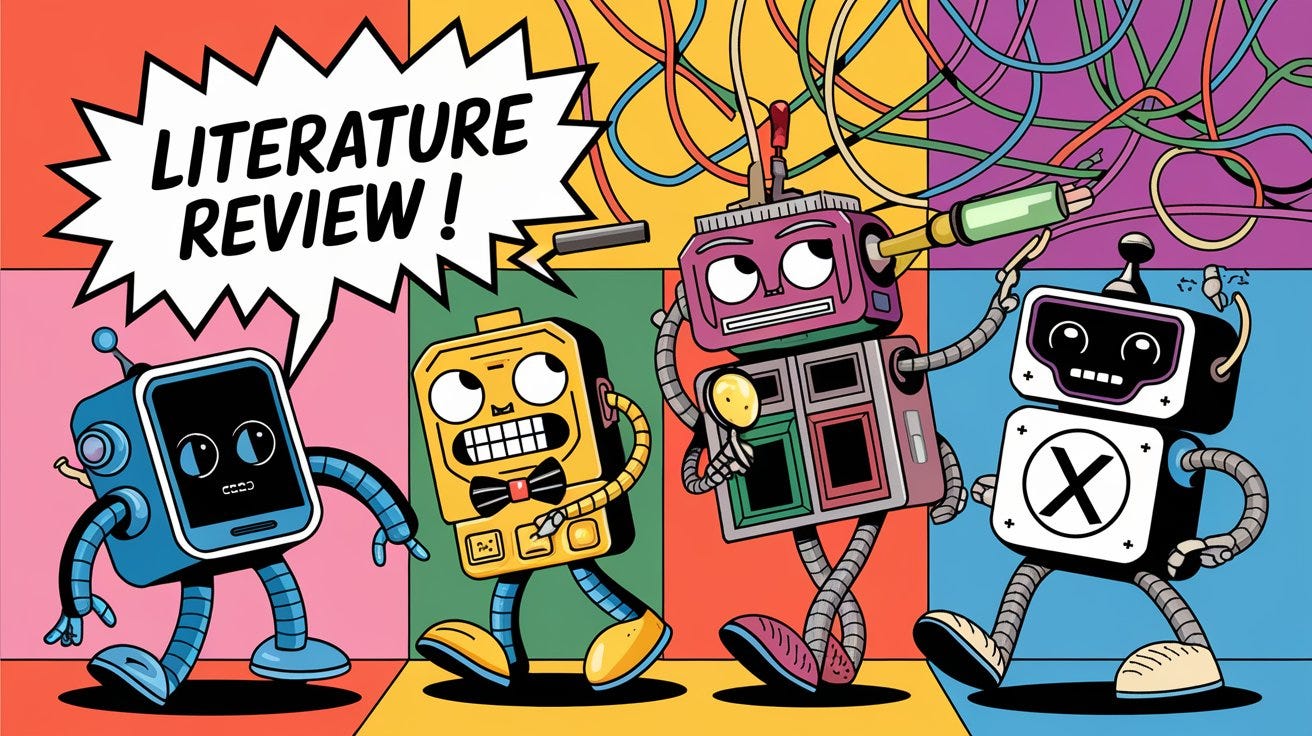
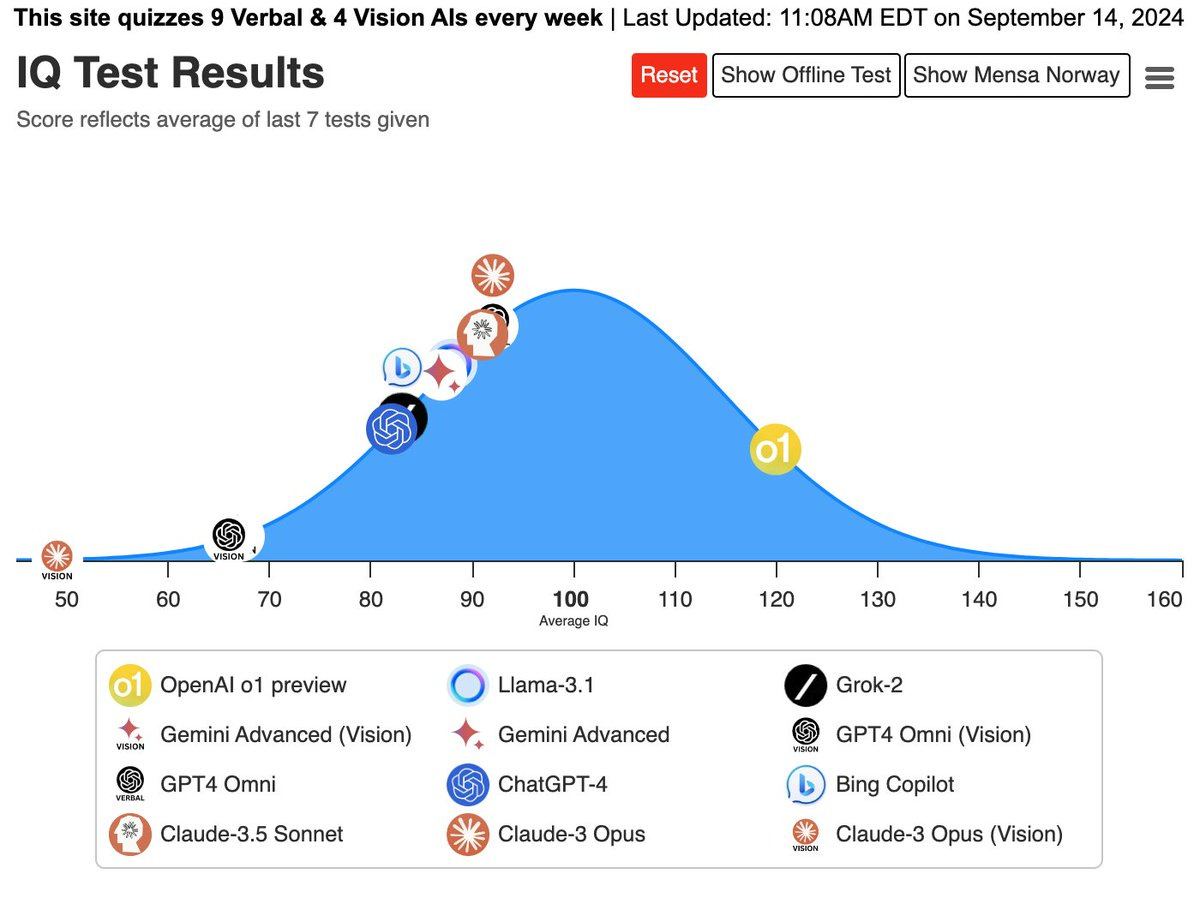
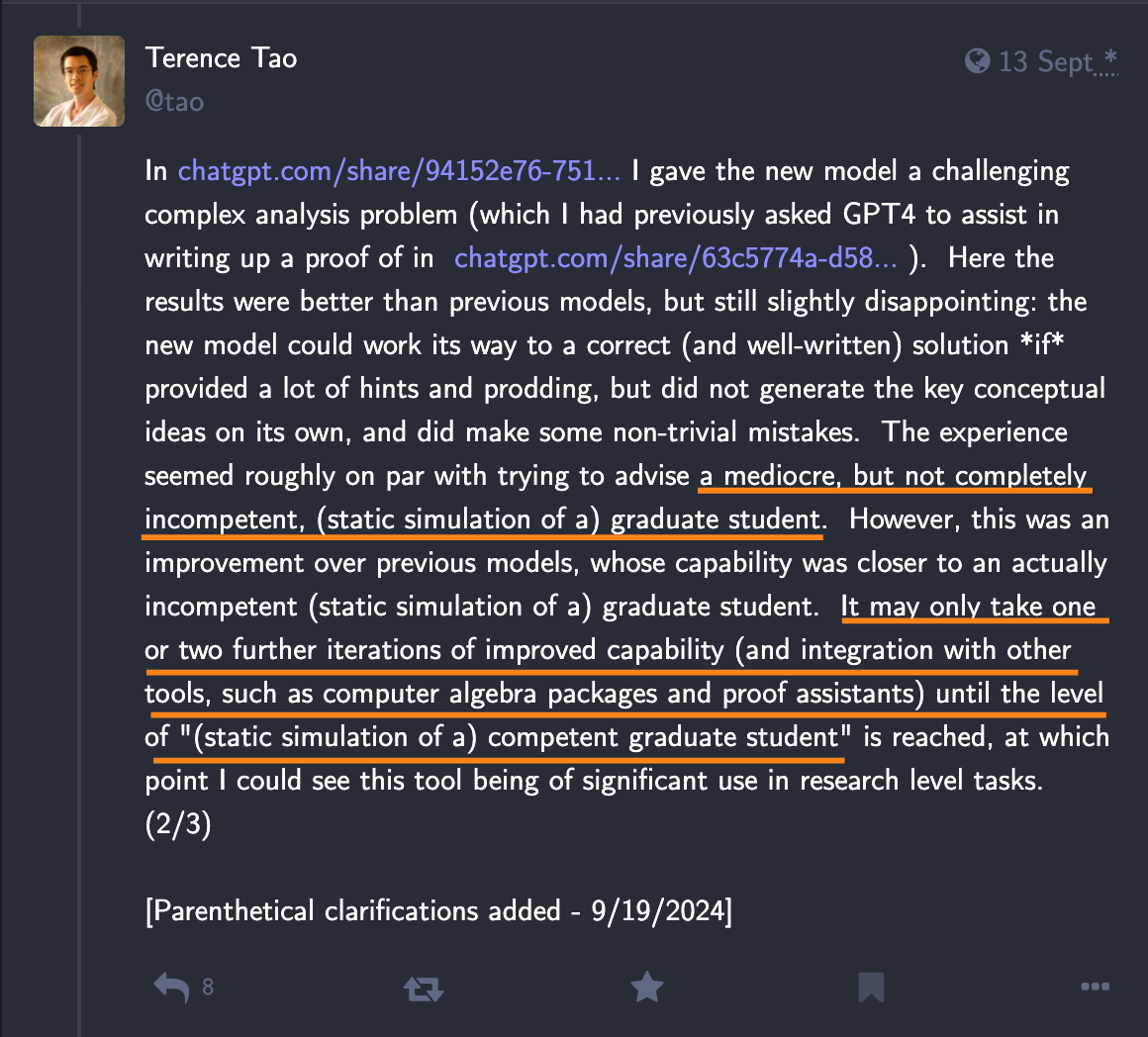


Great work! Thank you for sharing!